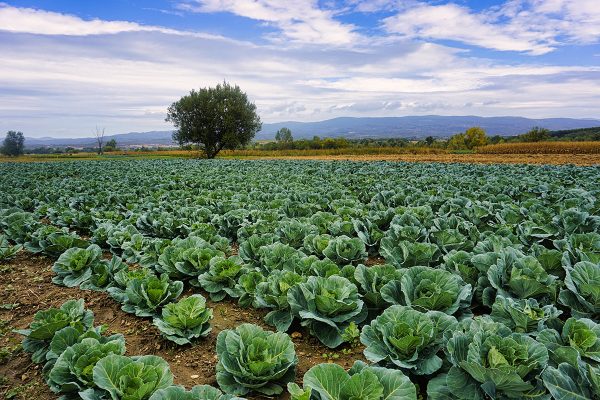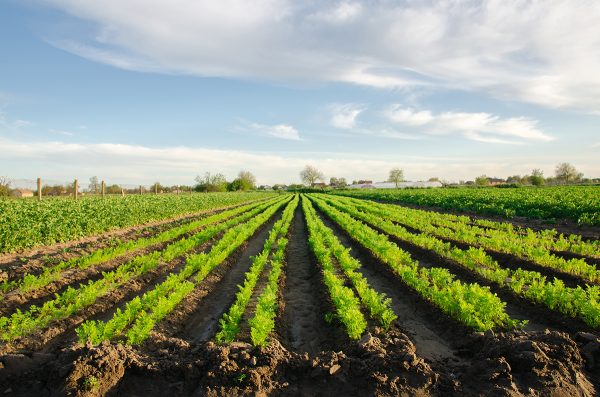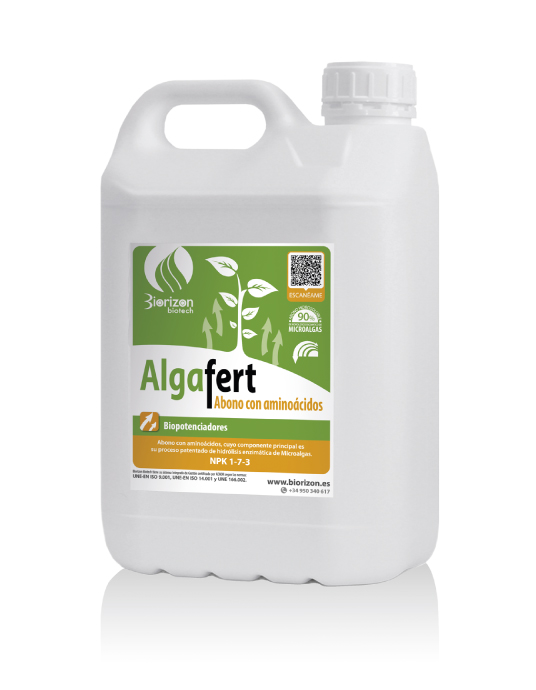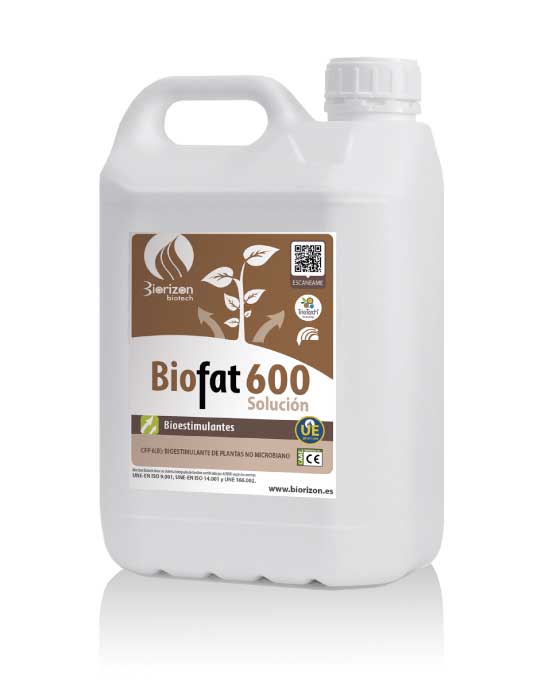

Horticultural
Tests and results
VEGETABLES

Intensive Horticultural Crops
Intensive horticultural crops cover a wide variety of vegetables that are essential in the daily diet. From tomato, bell pepper, melon, melon, zucchini, bean, cucumber, eggplant, lettuce, onion to potato, these crops represent the basis of the diet in many parts of the world. The diversity of these crops not only enriches our dishes, but also presents unique challenges in their production.
Climate and soil requirements in changing times
In the context of climate change, intensive horticulturists face climatic challenges that directly affect their crops. Extreme temperatures, drought episodes and blocked soils represent significant threats. High temperatures can affect normal plant development and compromise fruit quality. Drought reduces the availability of essential water for crop growth, while blocked soils hinder the absorption of essential nutrients, affecting overall plant health.

Physiopathologies and nutritional disorders in intensive horticulture.
Intensive horticultural crops are susceptible to various physiopathologies and nutritional disorders. Problems such as cracking in tomatoes, mildew in peppers, or mildew in cucumbers are common and affect the quality and quantity of production. Nutritional disorders, such as deficiencies of key nutrients (nitrogen, phosphorus, potassium), can affect crop development and reduce product quality.
In the current scenario, environmental legislations seek to limit the use of fertilizers to preserve soil health and reduce negative impacts on the environment. While this measure has undeniable benefits for sustainability, it presents challenges for intensive vegetable growers. The restriction in fertilizer application imposes the need for a more precise and efficient management of resources, which highlights the importance of addressing nutritional disorders in a strategic manner.
Accurate fertilization management becomes essential to avoid nutritional imbalances in crops. Limiting the amount of fertilizer that can be applied can result in critical nutrient deficiencies, compromising plant health and affecting product quality. On the other hand, excess of certain nutrients can contribute to environmental problems, such as water pollution from nutrient leaching.
It is in this context that biostimulation emerges as a key strategy. Unlike conventional fertilizers, biostimulants are designed to maximize the efficiency of absorption and use of available nutrients in the soil. These biological substances activate metabolic processes in plants that enhance their ability to absorb and utilize nutrients more effectively. Biostimulation, therefore, presents itself as a valuable tool in fertilization management, allowing farmers to maximize crop yields with less reliance on chemical fertilizers. However, it is crucial to approach this change with awareness and responsibility. Biostimulation should not be seen as a complete replacement of fertilizers, but as a strategic complement. The precise application of biostimulants, combined with careful monitoring of crop nutritional needs, offers a balanced solution that respects legislative constraints and promotes long-term sustainability.

Challenges in Pest and Disease Management in Intensive Horticulture
Intensive horticulture faces significant challenges in pest and disease management, which have been aggravated by the reduction in the availability of active ingredients and restrictions on their use. This scenario presents a number of challenges that growers must effectively address to protect crop health and ensure productive, quality crops.
Shortage of Active Materials:
The reduction in the number of active ingredients available for pest and disease control is one of the most pressing challenges. Increasingly stringent regulations seek to limit the use of chemicals, leading to less availability of pest and disease management options. This implies that growers must adopt more integrated and sustainable strategies to preserve crop health.
Pesticide Resistance:
Pest and disease resistance to available pesticides is another critical problem. El uso excesivo e indiscriminado de ciertos productos ha llevado al desarrollo de cepas resistentes, disminuyendo la eficacia de los tratamientos convencionales. The excessive and indiscriminate use of certain products has led to the development of resistant strains, reducing the effectiveness of conventional treatments.
Sustainable and Alternative Approaches:
The demand for more sustainable and environmentally friendly agricultural products has led to the search for alternative approaches to pest and disease control. Strategies such as the introduction of natural enemies, the use of pheromones for insect control and the development of resistant varieties have become essential in integrated pest management.
Producer Needs and Business Challenges
Intensive vegetable growers face challenges in managing resources such as water and nutrients, selecting sustainable practices, and marketing their products efficiently. Market competition and the demand for fresh, high quality food add pressure on producers, who must meet increasingly demanding standards.
Producer Needs and Business Challenges
In post-harvest, intensive horticulturists struggle with challenges to preserve freshness and quality of produce. The need to extend shelf life, minimize losses and meet the demands of an increasingly quality-conscious market are key challenges. In addition, pressure to reduce food waste is driving growers to seek innovative solutions in post-harvest handling.
In the market for horticultural products, current challenges include the need for sustainable practices, traceability and local production. End consumers demand fresh, safe and sustainable food, which requires producers to adopt approaches that address environmental, nutritional and phytotechnical challenges in a holistic manner.
Horticultural

Intensive horticulture faces a number of complex challenges. To overcome these challenges, it is crucial to consider fertilizer and biostimulant solutions specifically designed to correct the negative effects of environmental, nutritional and phytotechnical stresses. These solutions will not only strengthen crop health, but also contribute to the long-term sustainability and profitability of intensive vegetable growers.
Intensive Horticultural Crops
Intensive horticultural crops cover a wide variety of vegetables that are essential in the daily diet. From tomato, bell pepper, melon, melon, zucchini, bean, cucumber, eggplant, lettuce, onion to potato, these crops represent the basis of the diet in many parts of the world. The diversity of these crops not only enriches our dishes, but also presents unique challenges in their production.
Climate and Soil Requirements in Changing Times
In the context of climate change, intensive horticulturists face climatic challenges that directly affect their crops. Extreme temperatures, drought episodes and blocked soils represent significant threats. High temperatures can affect normal plant development and compromise fruit quality. Drought reduces the availability of essential water for crop growth, while blocked soils hinder the absorption of essential nutrients, affecting overall plant health.
Physiopathologies and Nutritional Disorders in Intensive Horticulture
Intensive horticultural crops are susceptible to various physiopathologies and nutritional disorders. Problems such as cracking in tomatoes, mildew in peppers, or mildew in cucumbers are common and affect the quality and quantity of production. Nutritional disorders, such as deficiencies of key nutrients (nitrogen, phosphorus, potassium), can affect crop development and reduce product quality.
In the current scenario, environmental legislations seek to limit the use of fertilizers to preserve soil health and reduce negative impacts on the environment. While this measure has undeniable benefits for sustainability, it presents challenges for intensive vegetable growers. The restriction in fertilizer application imposes the need for a more precise and efficient management of resources, which highlights the importance of addressing nutritional disorders in a strategic manner.
Accurate fertilization management becomes essential to avoid nutritional imbalances in crops. Limiting the amount of fertilizer that can be applied can result in critical nutrient deficiencies, compromising plant health and affecting product quality. On the other hand, excess of certain nutrients can contribute to environmental problems, such as water pollution from nutrient leaching.
It is in this context that biostimulation emerges as a key strategy. Unlike conventional fertilizers, biostimulants are designed to maximize the efficiency of absorption and use of available nutrients in the soil. These biological substances activate metabolic processes in plants that enhance their ability to absorb and utilize nutrients more effectively. Biostimulation, therefore, presents itself as a valuable tool in fertilization management, allowing farmers to maximize crop yields with less reliance on chemical fertilizers.

However, it is crucial to approach this change with awareness and responsibility. Biostimulation should not be seen as a complete replacement of fertilizers, but as a strategic complement. The precise application of biostimulants, combined with careful monitoring of crop nutritional needs, offers a balanced solution that respects legislative constraints and promotes long-term sustainability.
Challenges in Pest and Disease Management in Intensive Horticulture
Intensive horticulture faces significant challenges in pest and disease management, which have been aggravated by the reduction in the availability of active ingredients and restrictions on their use. This scenario presents a number of challenges that growers must effectively address to protect crop health and ensure productive, quality crops.
Shortage of Active Materials:
The reduction in the number of active ingredients available for pest and disease control is one of the most pressing challenges. Increasingly stringent regulations seek to limit the use of chemicals, leading to less availability of pest and disease management options. This implies that growers must adopt more integrated and sustainable strategies to preserve crop health.
Pesticide Resistance:
Pest and disease resistance to available pesticides is another critical problem. El uso excesivo e indiscriminado de ciertos productos ha llevado al desarrollo de cepas resistentes, disminuyendo la eficacia de los tratamientos convencionales. The excessive and indiscriminate use of certain products has led to the development of resistant strains, reducing the effectiveness of conventional treatments.

Pesticide Resistance:
Pest and disease resistance to available pesticides is another critical problem. El uso excesivo e indiscriminado de ciertos productos ha llevado al desarrollo de cepas resistentes, disminuyendo la eficacia de los tratamientos convencionales. The excessive and indiscriminate use of certain products has led to the development of resistant strains, reducing the effectiveness of conventional treatments.
Sustainable and Alternative Approaches:
The demand for more sustainable and environmentally friendly agricultural products has led to the search for alternative approaches to pest and disease control. Strategies such as the introduction of natural enemies, the use of pheromones for insect control and the development of resistant varieties have become essential in integrated pest management.
Producer Needs and Business Challenges
Intensive vegetable growers face challenges in managing resources such as water and nutrients, selecting sustainable practices, and marketing their products efficiently. Market competition and the demand for fresh, high quality food add pressure on producers, who must meet increasingly demanding standards.
Post-harvest Challenges and Market Demands
In post-harvest, intensive horticulturists struggle with challenges to preserve freshness and quality of produce. The need to extend shelf life, minimize losses and meet the demands of an increasingly quality-conscious market are key challenges. In addition, pressure to reduce food waste is driving growers to seek innovative solutions in post-harvest handling.
In the market for horticultural products, current challenges include the need for sustainable practices, traceability and local production. End consumers demand fresh, safe and sustainable food, which requires producers to adopt approaches that address environmental, nutritional and phytotechnical challenges in a holistic manner.

















